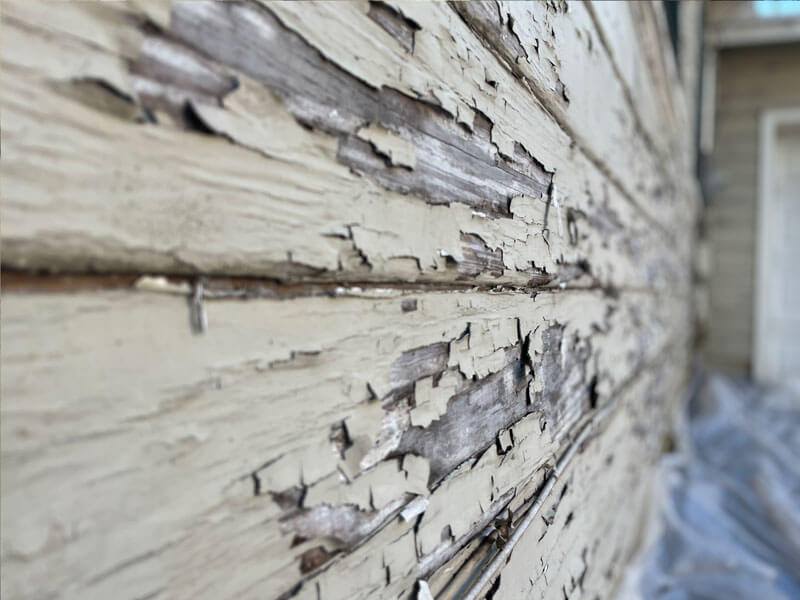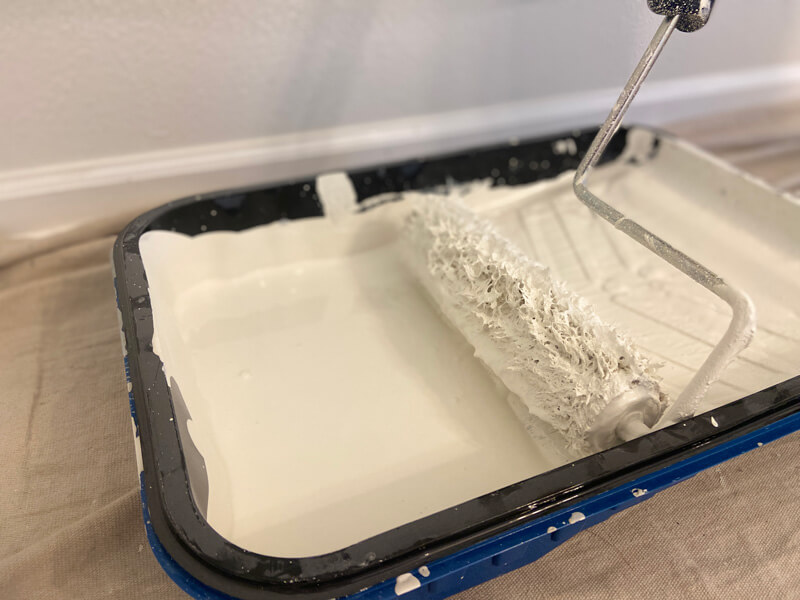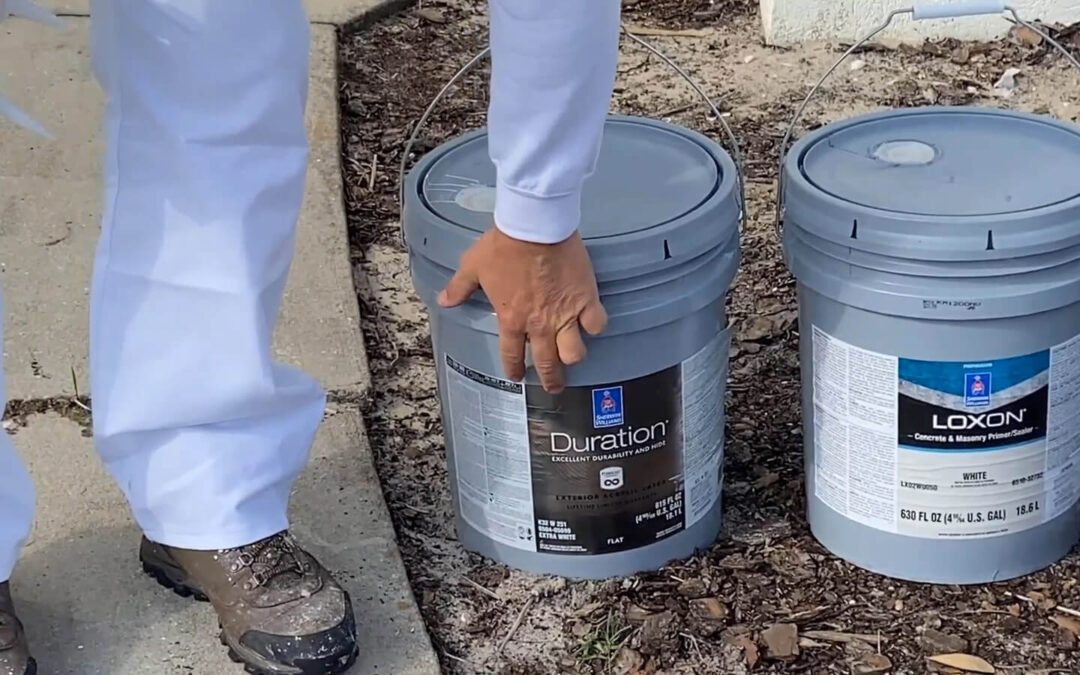If you’re considering using interior paint for an outdoor project, you may be wondering: Can I use interior paint outside? The short answer is no, but let’s dive into the reasons why.
I do not recommend using interior paint outdoors if you want a long-lasting paint job. I also do not advise using exterior paint indoors – it could cause adverse health consequences. Issues may arise when paint is not used according to the official recommendations.
What will happen if you use interior paint outside?
Interior paint is not designed to withstand the harsh elements of the outdoors. It lacks the durability and weather resistance that exterior paint provides. Exterior paint is specially formulated to protect against UV rays, moisture, and temperature changes. Without these properties, interior paint will quickly deteriorate when exposed to the elements.
What happens if i use interior paint outside?
Using interior paint on an exterior surface will result in aesthetic flaws appearing quickly, even within a season. This is because interior paint is not formulated to withstand exterior elements, causing it to quickly crack, blister, bubble up, and eventually peel off the surface altogether. It is certain that interior wall paint will not last long when used outdoors. Therefore, please avoid attempting to use interior paint on an exterior surface.
It is not easy to repair this damage. The first step would be to sand all the interior paint off the substrate and then seal with an outdoor primer. The entire area must be repainted with the appropriate outdoor wall paint, resulting in 3x the labor and twice the cost of materials then if the job was done correctly in the first place.


If an accident has occurred and you used indoor paint outdoors (say because of a wrong label) and you quickly realized the mistake, you can still save it! Apply 1 or 2 coats of outdoor paint immediately after it has dried.
Factors to Consider – Can you use interior paint outside?
Several factors come into play when deciding whether to use interior paint outside. Let’s take a closer look at each of them:
- Exposure to the Elements: Exterior surfaces face constant exposure to sunlight, rain, wind, and fluctuating temperatures. Interior paint, on the other hand, is specifically formulated to withstand controlled indoor conditions. Thus, it may not provide the necessary protection against outdoor elements.
- Durability and Longevity: Exterior paints are designed with stronger binders and additives that enhance their durability and resistance to weathering. Interior paints lack these elements, which may result in premature peeling, fading, and overall deterioration when used outdoors.
- Mold and Mildew Resistance: Exterior paints are often formulated with anti-microbial agents to combat mold and mildew growth. Interior paint may not possess these qualities, making it susceptible to these issues in outdoor environments.
- Color Fading: Due to the harsh UV exposure, interior paint colors can fade more rapidly when used outside. The vibrant hues you admire indoors might lose their luster and vibrancy over time.
- Surface Adhesion: Exterior surfaces, such as wood, stucco, or brick, often require paints with superior adhesion properties to withstand expansion, contraction, and moisture fluctuations. Interior paint may not adhere well to these surfaces, resulting in poor coverage and premature peeling.
The Risks of Using Interior Paint Outside
While it may be tempting to repurpose interior paint for outdoor projects, it’s essential to understand the risks involved. Here are the key dangers you may encounter when using interior paint outside:
- Lack of Protection: Interior paint is not designed to provide sufficient protection against harsh weather conditions, leading to potential damage, such as cracking, peeling, or mold growth.
- Inadequate Adhesion: Exterior surfaces require paints with enhanced adhesion properties to withstand the natural expansion and contraction of materials. Interior paint may fail to adhere properly, resulting in poor coverage and an unsightly appearance.
- Reduced Longevity: Exterior paints are formulated to withstand the test of time, with UV resistance, mold resistance, and color retention properties. Interior paint lacks these attributes, leading to premature fading and deterioration when exposed to outdoor elements.
Can I use exterior paint inside?
Again, the short answer here is also that you shouldn’t. Apart from the fact that the paint will not cover well, outdoor paint is also harmful to health when used indoors. Exterior paint contains a much stronger blend of VOCs (Volatile Organic Compounds), pigments, additives, and binders then interior paint – whether the paint is oil or water based. The finish is softer, more flexible, and produces toxic fumes even after it is dry – until the paint is fully cured. These elements are essential to resist rain, heat and other exterior elements, but if used inside with much less ventilation, it can make people and pets ill, not to mention and the finish isn’t as desirable.
What is interior paint?
Indoor water-based paints contain no or very low levels of VOC’s. However, outdoor paints are usually made with solvents and have higher VOCs, which can evaporate into the air and cause irritation, headaches, and dizziness in closed spaces. I don’t recommend using outdoor paint indoors where you or your family can breathe it in!
What is the difference between interior and exterior paint?
Interior paint is specifically designed for inside surfaces and are usually water based. For interior use, it is important that the paint is wear resistant and has an even finish. It is inevitable that the wall will need to be cleaned at some point and will need to withstand wiping or scrubbing.

Because of its physical resistance, it is a stiffer wall paint that will lay evenly on the surface. However, it does not weather well due to temperature fluctuations, scorching sun or rainy seasons.
Difference between exterior and interior paint
Outdoor wall paint is the opposite. This is a flexible paint, usually oil-based with a lower pigment content. It has excellent resistance to the elements but higher levels of VOCs.
If you’re looking to paint an outdoor surface, it’s important to choose a paint specifically designed for exterior use. Look for paint labeled “exterior” or “outdoor” and make sure to read the label to ensure it’s appropriate for your project’s needs. Exterior paint comes in a variety of types, including latex, oil-based, and acrylic, each with its own set of benefits and drawbacks.
Can you mix interior and exterior paint?
It is not advisable to mix them, nor is it possible to mix a water-based paint with an oil-based paint without immediate separation. Even if both paints are water-based, they contain other substances that will make the mixed paint less compatible.
If you use both types of paint mixed together on an exterior surface, the paint will adhere but not with an even coating or sheen. Indoors, you will get a pungent paint smell, indicating a VOC level that is harmful to your health. There are also so-called hybrid paints available in paint shops. Although I do not use them in my work, they can be useful for smaller projects. For example, a storage shed or a garage that is not for residential use.
How can I tell if paint is interior or exterior?
If you want to use an older paint where the label has peeled off the can, you may want to apply a test strip to a smaller area outside. After 1-2 days of drying, use a cloth dipped in denatured alcohol and wipe over the paint. If you don’t see any color or paint marks on the cloth, then its most likely indoor paint. If you can see the paint color on the rag and an oily residue, it is outdoor paint.
The smell of indoor wall paint disappears after 1-2 weeks of ventilation, while the pungent smell of outdoor wall paint can be felt for longer. Another characteristic is the coverage and area of the paint. Indoor paint will cover the entire wall nicely in 1-2 coats. Outdoor paint is designed to be applied on a textured surface, so it will not give even coverage on a flat wall.
In conclusion – Can interior paint be used outside?
Using interior paint outside is not recommended. Interior paint lacks the durability and weather resistance needed to protect outdoor surfaces, may not adhere properly to exterior surfaces, and may pose potential health risks. Always choose a paint specifically designed for exterior use to ensure the best results for your outdoor project.
If you don’t want to invest in painting tools and would rather rely on an experienced, professional painter, call me to help with your project. 1(904)217-9681
I perform a quick on-site survey with my team and give you a personalized quote in no time for your planned restoration.
I work quickly and reliably! I will quickly take care of your indoor painting needs with quality materials and more than 10+ years of experience!
Exterior house painting service
Related blog articles:
Three Steps to a Successful Home Renovation
Wall Painting Tools And Equipment – What You Will Need For Interior Wall Painting
How Can I Clean Walls With Flat Paint?


